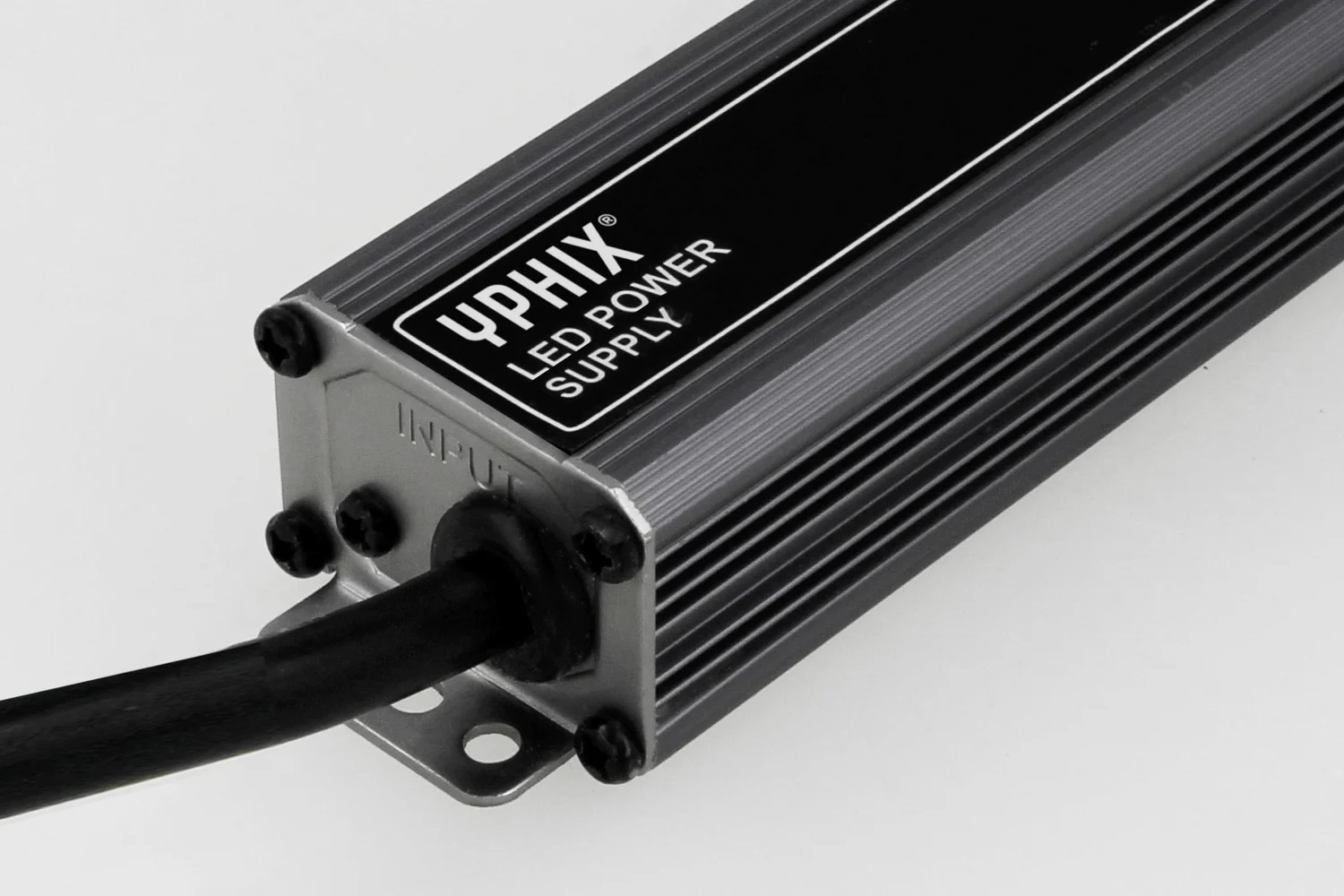Tech
The Pros and Cons of Real Grass vs Artificial for Backyard Landscaping

Do you want to create the perfect outdoor space? One of the most significant decisions homeowners face is choosing between real grass vs artificial turf.
Both options have their advantages and drawbacks. Often, the best choice for your backyard will depend on your specific needs, preferences, and lifestyle. In this article, we’ll explore the pros and cons of each option to help you make an informed decision.
Real Grass: The Traditional and Time-Honored Choice
Real grass has been the preferred option for lawns for centuries, serving as a testament to its enduring appeal. The reasons for its popularity are multifaceted. It continues to be a top choice for homeowners seeking a classic and natural outdoor space. Here’s a closer look at the advantages of opting for real grass in your backyard:
Natural Appearance
A lush, green lawn has unmatched visual appeal. Real grass offers a vibrant, living landscape that synthetics can’t match. Its soft texture and rich natural colors create a calming, inviting outdoor space.
It helps with soothing the mind and improving any area’s aesthetics. This authentic look boosts a property’s overall ambiance, making it a more pleasant place to live.
Environmental Benefits
Opting for real grass benefits the environment beyond just looks. It captures carbon dioxide, enhancing air quality and combating climate change.
Real grass also prevents soil erosion with its roots and supports a diverse ecosystem. This offers a habitat for microorganisms and insects vital for pollination and biodiversity in urban areas.
Cooler Surface
Real grass offers a cooler environment for outdoor activities, unlike synthetic turf that heats up in the sun. Its natural capacity to absorb moisture and reflect sunlight keeps it cool. This makes it ideal for children and pets to play on in summer and reduces heat-related risks.
Real grass also helps lower surrounding temperatures. It acts as a natural air conditioner during hot weather.
While the benefits of real grass are compelling, it’s important to consider the potential challenges as well:
High Maintenance
The lush appearance of a natural lawn comes with the requirement for ongoing care. This includes regular mowing to keep the grass at a good height. It also includes frequent watering to keep it hydrated.
You also need fertilizing to promote growth. And you need pest control to prevent infestations. These tasks need both time and resources, making maintenance a consideration for homeowners.
Seasonal Changes
Real grass is subject to the whims of nature, which means it can undergo noticeable changes throughout the year. During winter months or in the face of prolonged drought, it may enter a dormant state, resulting in a brown and less vibrant appearance. This seasonal variability is something homeowners need to prepare for when choosing real grass.
Potential for Damage
Although real grass is a beautiful and environmentally friendly choice, it is not immune to wear and tear. High foot traffic, playful pets, and various outdoor activities can lead to physical damage, such as:
- bare spots
- compacted soil
- uneven growth
These issues need regular attention and repair to maintain the lawn’s appearance and health.
Artificial Turf: Low-Maintenance and High-Appeal Alternative
In recent years, artificial turf has surged in popularity. It is emerging as a low-maintenance alternative to traditional grass lawns. Here’s a closer look at the compelling advantages of opting for artificial turf in your outdoor spaces:
Minimal Maintenance
A major benefit of artificial turf is its low maintenance. Unlike natural grass, it needs no mowing, watering, or fertilizing. This results to:
- saving time
- reducing water use
- avoiding harmful chemicals
This is especially appealing for busy homeowners. Or anyone wanting a low-maintenance lawn solution, ensuring a pristine appearance without the hard work.
Year-Round Aesthetic Appeal
Artificial turf keeps a vibrant, lush green look regardless of the season or weather, solving common lawn issues like patchiness and brown spots. It offers a consistently appealing look without the need for seasonal reseeding. Choosing artificial turf ensures your outdoor spaces stay beautiful all year, enhancing your home’s exterior with less maintenance than natural lawns.
Durability and Versatility
High-quality artificial turf installed by professionals, like this Artificial Turf Dallas company, withstands heavy foot traffic and intense play, making it perfect for families with active kids and pets. It’s not just for homes; it suits sports fields, public parks, and commercial areas too.
Its versatility ensures a reliable, long-lasting surface that looks good over time, even in busy spaces. Artificial turf is a durable, safe, and low-maintenance option for various outdoor areas, representing a smart, long-term investment in your property.
While the benefits are plentiful, there are also some considerations to weigh before deciding on artificial turf:
Initial Investment
The upfront cost of installing artificial turf can be higher than seeding or laying sod for a real grass lawn. However, it’s important to consider the long-term savings in maintenance costs, water bills, and lawn care services, which can offset the initial investment over time.
Heat Retention
One notable drawback of artificial turf is its tendency to absorb and retain heat, particularly in direct sunlight. This can result in surfaces becoming uncomfortably warm for bare feet during hot weather. Certain types of infill and newer turf technologies are being developed to mitigate this issue, improving the comfort of artificial turf in warm climates.
Environmental Impact
While artificial turf reduces the need for water and chemical treatments associated with traditional lawns, it’s worth noting that it doesn’t offer the same environmental benefits as natural grass. Real turf plays a role in capturing carbon dioxide, producing oxygen, and supporting biodiversity within the ecosystem. Additionally, considerations around the recyclability and lifespan of artificial turf materials are essential for environmentally conscious homeowners.
Making the Best Choice Between Real Grass vs Artificial for Your Backyard
Weigh the pros and cons of real grass vs artificial options and consider your unique situation. Then, you can make an informed decision. It will help you create the perfect outdoor oasis for your home.
You can choose real grass’s natural beauty or artificial turf’s low maintenance. Remember, the most important thing is to make a backyard that you and your family can enjoy for years.
Ready to explore more insightful tips and ideas for your home and garden? Don’t stop here! We invite you to browse through our collection of articles, where we cover a wide range of topics that can help and inspire you.
Tech
The Growing Importance of Reliable LED Power Supply Suppliers in the Global Lighting Industry

In recent years, LED lighting has revolutionized the way we illuminate our homes, offices, streets, and industrial facilities. With its high efficiency, long lifespan, and environmental benefits, LED technology has rapidly replaced traditional lighting sources such as incandescent and fluorescent lamps. However, one of the most critical yet often overlooked components in LED lighting systems is the LED power supply. As demand for LEDs continues to grow worldwide, the role of LED power supply suppliers has become increasingly important for ensuring quality, reliability, and innovation in the lighting industry.
An LED power supply, also known as an LED driver, is responsible for converting the incoming electrical current into a stable and suitable form that powers the LEDs. Since LEDs require specific current and voltage conditions to operate efficiently, the power supply plays a vital role in determining the performance, safety, and lifespan of the lighting system. A well-designed LED power supply ensures consistent brightness, prevents flickering, and protects against power surges or overheating. Therefore, choosing the right LED power supply and working with reliable suppliers are essential steps for any lighting manufacturer or project integrator.
The Role of LED Power Supply Suppliers in Quality Assurance
High-quality LED lighting products depend heavily on the capabilities and expertise of their suppliers. Leading LED power supply suppliers not only provide stable and energy-efficient products but also ensure compliance with international standards such as CE, UL, RoHS, and FCC. These certifications demonstrate that their power supplies meet safety, environmental, and performance requirements. Moreover, reputable suppliers typically have robust quality control systems and testing facilities to ensure that each unit performs consistently under different environmental conditions.
In today’s competitive market, LED power supply suppliers also play an essential role in helping manufacturers achieve cost efficiency. Through innovation and economies of scale, they can reduce the cost per unit while maintaining product quality. This enables lighting brands to offer affordable yet high-performance solutions to consumers and businesses. Furthermore, suppliers often work closely with their clients to customize solutions for specific applications, such as architectural lighting, industrial lighting, horticultural lighting, or smart city infrastructure.
Innovation and Technology Development
Innovation is a key differentiator among LED power supply suppliers. With rapid advancements in smart technology, the demand for intelligent power supplies has surged. Modern LED drivers now often include features such as dimming capability, remote monitoring, wireless control, and integration with Internet of Things (IoT) systems. These advanced features allow users to control brightness, color temperature, and energy consumption through mobile apps or centralized control platforms, offering both convenience and energy efficiency.
Leading suppliers are investing heavily in research and development to create more compact, efficient, and eco-friendly power supply solutions. The focus is shifting toward achieving higher energy conversion rates, improved thermal management, and longer lifespans. In addition, as governments and organizations emphasize sustainable development, suppliers are developing products that support renewable energy systems, such as solar-powered LED lighting.
Global Supply Chain and Market Trends
The global LED power supply market is highly competitive and dynamic. Suppliers from countries such as China, Taiwan, South Korea, Germany, and the United States dominate the industry, each contributing unique strengths. Chinese LED power supply suppliers, for instance, have gained a significant share of the global market due to their cost-effective manufacturing capabilities and rapid product innovation. Many international lighting brands source their drivers from China because of the country’s well-established electronics supply chain.
However, as global demand continues to rise, challenges such as raw material shortages, fluctuating energy costs, and international trade policies can impact supply chain stability. To address these issues, many suppliers are adopting more resilient business models, such as establishing regional production centers, diversifying their supplier base, and using advanced logistics technologies. These strategies help ensure timely delivery, consistent quality, and cost control for their global customers.
Selecting the Right LED Power Supply Supplier
When selecting a supplier, lighting manufacturers and distributors must consider several key factors. First, product reliability and certification are essential to ensure compliance with safety and performance standards. Second, technical support and after-sales service play a significant role, especially for large-scale lighting projects. A responsive supplier can help troubleshoot issues, provide design recommendations, and offer firmware updates for smart drivers. Third, customization capabilities are increasingly important, as different lighting applications require unique voltage, current, and control specifications.
Furthermore, sustainability is becoming a core selection criterion. Many companies now prioritize suppliers who adhere to green manufacturing practices, use recyclable materials, and minimize waste in production. This alignment with environmental values not only enhances brand reputation but also supports global sustainability goals.
The Future of LED Power Supply Suppliers
Looking ahead, the role of LED power supply suppliers will continue to expand as lighting technology evolves. The integration of artificial intelligence (AI), IoT, and advanced energy management systems will require more sophisticated power solutions. Suppliers who can adapt to these trends and offer smart, efficient, and eco-friendly products will gain a competitive advantage in the global market.
Additionally, as renewable energy and electric mobility continue to grow, LED power supply technologies may find new applications beyond lighting — such as in charging systems, energy storage, and smart grid solutions. This diversification offers exciting opportunities for both established and emerging suppliers in the industry.
Conclusion
In conclusion, LED power supply suppliers are at the heart of the rapidly evolving LED lighting ecosystem. Their products directly influence the efficiency, safety, and intelligence of lighting systems across residential, commercial, and industrial sectors. By providing reliable, innovative, and sustainable solutions, these suppliers not only support the growth of the LED industry but also contribute to a more energy-efficient and environmentally friendly world. As the global market continues to expand, collaboration between manufacturers, designers, and LED power supply suppliers will remain essential for driving the next generation of lighting innovation.
Tech
6 Myths About Solar Energy Debunked

In recent years, the popularity of solar energy has skyrocketed as more homeowners recognize its potential benefits. Despite this increase in interest, many people are still held back by incorrect beliefs about solar energy.
Let’s explore six common myths surrounding this renewable energy source and the facts that debunk them in this solar installation guide.
1. Solar Energy is Too Expensive
One of the most widespread misconceptions about solar energy is that it is prohibitively expensive. While the initial investment for a solar power system can be significant, various financing options are available.
Many states also offer tax credits, rebates, and incentives that can greatly reduce costs. In fact, the long-term solar energy savings makes it one of the most energy-efficient solutions for homeowners!
2. Solar Panels Don’t Work in Cloudy Weather
Another prevalent myth is that solar panels aren’t effective unless it’s sunny all the time. While it’s true that solar panels are most efficient during direct sunlight, they can still generate energy on cloudy or rainy days.
In fact, most modern solar panels are designed to capture even diffused sunlight effectively.
3. Solar Energy Requires Too Much Maintenance
Many people think that once they install a solar power system, maintenance will be a headache. On the contrary, they are relatively low-maintenance.
Regular cleaning and occasional inspections are usually all that’s needed. Most manufacturers also provide warranties to cover any potential issues.
4. Installing Solar Panels Will Ruin Your Roof
Some homeowners fear that installing solar panels will damage their roofs. In reality, reputable solar installers know how to effectively mount panels without compromising the integrity of your roof.
Proper installation can actually improve your roof’s lifespan by protecting it from elements like UV rays and rain.
5. Solar Energy is Not Available Everywhere
While it’s true that solar energy is more effective in certain geographic locations, it is available almost everywhere. Cities and towns across the country, even in less sunny regions, are utilizing solar energy.
Innovative technology ensures that solar panels can efficiently generate power regardless of the climate. When in doubt, consult a renewable energy expert for region-specific advice.
6. Solar Panel is the Only Available Solar Energy Solution
Many people assume that solar panels are the only effective way to lower energy bills, but that isn’t true. Daylight solutions like Solatube can capture natural sunlight and channel it into interior spaces, reducing the need for artificial lighting during the day.
Visit https://thesolarguys.com/ to find out how to get started!
Don’t Let Myths Hinder Your Solar Journey!
Understanding the facts behind solar energy can empower homeowners to make informed decisions. By debunking these five myths, we can foster a clearer understanding of how solar energy can benefit us all. If you’re considering a shift to solar, take the leap and explore the options available to you!
As you plan your transition to renewable energy, consider working with experienced professionals who can guide you through the process. Don’t let misconceptions hold you back from harnessing the power of the sun.
Looking for more home improvement advice? Dive into our other blog posts for expert tips and inspiration!
READ ALSO: How to Maximise Energy with Solar Panel Cleaning Services
Tech
waxillgro279: Understanding Your Digital Identity

Did you know that the average person has over 90 online accounts? Each one requires a username, and many of those are autogenerated strings of characters you’d never choose yourself. That’s where an identifier like waxillgro279 comes in. It might look like random keyboard smashing, but it represents a much bigger story about your life online.
In this guide, we’ll pull back the curtain on these computer-generated usernames. We’ll explore what they are, why they matter for your security, and how you can manage them effectively. Let’s dive in.
What Exactly Is waxillgro279?
Before you assign any meaning to it, it’s crucial to understand that waxillgro279 is a prime example of a context-dependent identifier. In plain English, it’s a unique name created by a system, not a person.
Think of it like a digital license plate. It’s not meant to be poetic or memorable; its main job is to be unique. You might encounter a handle like this in several places:
- A new user account on a website or app.
- A temporary project ID in collaborative software.
- A transaction reference number for an online order.
- An auto-saved file name from a document editor.
The key takeaway? waxillgro279 itself has no inherent meaning. Its purpose is entirely defined by the system that generated it. You must check the source—the email, webpage, or app where you found it—to understand its true function.
A Step-by-Step Guide to Managing Autogenerated Identifiers
Finding a cryptic username in your inbox can be confusing. Here’s a simple, friendly guide to figuring out what to do with it.
- Don’t Panic or Assume. Your first reaction might be, “What is this? Is this a virus?” Remember, these identifiers are usually benign. Take a deep breath and proceed calmly.
- Verify the Source Immediately. This is the most critical step. Where did you see waxillgro279?
- Email: Check the sender’s address carefully. Is it from a company you know and trust, like Amazon, your bank, or a project management tool like Asana? Look for signs of phishing—poor grammar, urgent threats, or mismatched links.
- App or Website: Are you logged into a service? Check your account settings or notification center within the app itself. Never click on links from an unverified source.
- Understand Its Context. Once you’ve confirmed the source is legitimate, figure out the identifier’s role.
- Is it your new username for logging in?
- Is it a reference number for a customer support ticket?
- Is it a unique key for accessing a shared document?
- Decide on an Action.
- Save It: If it’s a important login ID or reference number, save it in a secure password manager or a trusted note-taking app.
- Ignore It: If it’s a temporary, one-time code, you can usually disregard it once you’ve used it.
- Change It: Many services allow you to change an autogenerated username to something more memorable in your account settings.
Why These Random Identifiers Actually Protect You
You might wonder why companies don’t just let you pick all your usernames. It seems like it would be easier! The truth is, autogenerated IDs like waxillgro279 play a huge role in modern online security.
Using a unique, random string makes it incredibly difficult for hackers to guess your login credentials through so-called “brute force” attacks. If every username was a common first name, accounts would be far less secure.
The chart below shows the relative strength of different types of usernames against automated hacking attempts. As you can see, a random alphanumeric string is significantly more robust than a common name or word.
Common Mistakes to Avoid
When dealing with these computer-assigned handles, a few missteps can cause headaches or even security risks.
- Treating It as Spam Immediately. Deleting that “welcome” email with your new user ID might mean you lose your only way to access a service you signed up for.
- Using It Across Multiple Sites. Never use the same password for waxillgro279 that you use for any other account. Its randomness is a strength, but password reuse is a critical weakness.
- Assuming All Autogenerated Messages are Safe. Scammers are clever. They know this trend and might send fake emails with similar-looking IDs. Always, always verify the source first.
Your Next Steps: Taking Control of Your Digital Self
Your online identity is a collection of these tiny data points. Managing them well is key to a secure and streamlined digital life. Here are your three key takeaways:
- Context is King. A string like waxillgro279 is meaningless without knowing where it came from. Verify the source before you do anything.
- Embrace the Randomness. These complex identifiers are a layer of security, not an inconvenience. They help keep your accounts safe from automated attacks.
- Use a Password Manager. This is the single best tool for storing these hard-to-remember usernames and generating strong, unique passwords for each of them.
What’s one change you’ll make today to better manage your digital footprints?
You May Also Read: Ovppyo: Emerging AI-Driven Automation Concept Explored
FAQs
I found “waxillgro279” in an email. Is it a virus?
Not necessarily. It is almost certainly an autogenerated username or ID from a legitimate service you signed up for. Carefully check the sender’s email address to verify it’s from a company you trust.
Can I change my autogenerated username?
In many cases, yes. Once you log into the service using the provided credentials, check your account settings or profile page. There is often an option to change your username to something more memorable.
Why do companies use such hard-to-remember names?
Primarily for uniqueness and security. Automated systems guarantee that no two users have the same ID, preventing conflicts. The randomness also makes it harder for bots to guess usernames during login attempts.
Should I be worried about privacy with these identifiers?
These IDs are typically designed to be anonymous and don’t contain personal information. However, always review the privacy policy of the service generating it to understand what data they associate with your account.
What’s the best way to keep track of them?
A dedicated password manager is highly recommended. It securely stores all your usernames, passwords, and notes, so you only need to remember one master password.
Is “waxillgro279” a product I can buy?
No. Based on its structure and common usage online, it is an identifier, not a commercial product. Be highly skeptical of any site trying to sell you something using this term.
What if I lose this username?
Use the “Forgot Username” or “Help” link on the service’s login page. You will typically need to provide the email address associated with the account, and they will send you a reminder.
-

 Education11 months ago
Education11 months agoMastering Excel: Your Comprehensive Guide To Spreadsheets And Data Analysis
-

 Tech1 year ago
Tech1 year agoHow To Choose The Best Forex Trading Broker?
-

 Business1 year ago
Business1 year agoExploring the Rental Market: Properties for Rent in Malta
-

 Blog11 months ago
Blog11 months agoArab MMA Fighters Shine Bright: Meet the Champions of PFL MENA
-

 Travel1 year ago
Travel1 year agoExperience the Best Desert Safari Dubai Offers!
-

 How-To Guides2 years ago
How-To Guides2 years agoComprehensive Guide to Cockwarming: Enhancing Intimacy and Connection
-

 Home Improvement2 years ago
Home Improvement2 years agoEco-Friendly Round Rug Options for Sustainable Living in NZ
-

 Apps and Games2 years ago
Apps and Games2 years agoDiscover Tickzoo: The Ultimate Platform for Video Content Lovers and Creators
